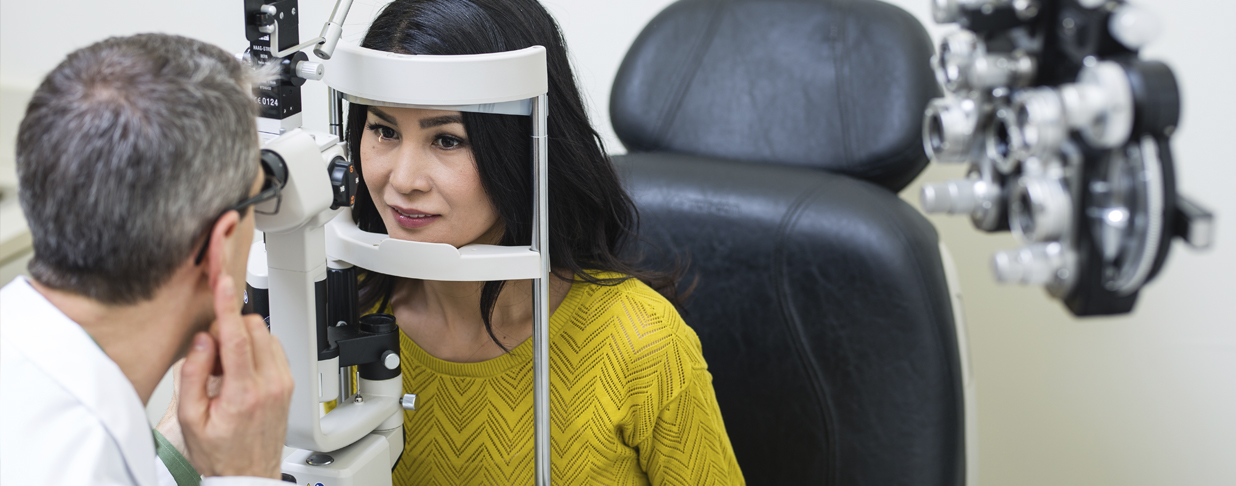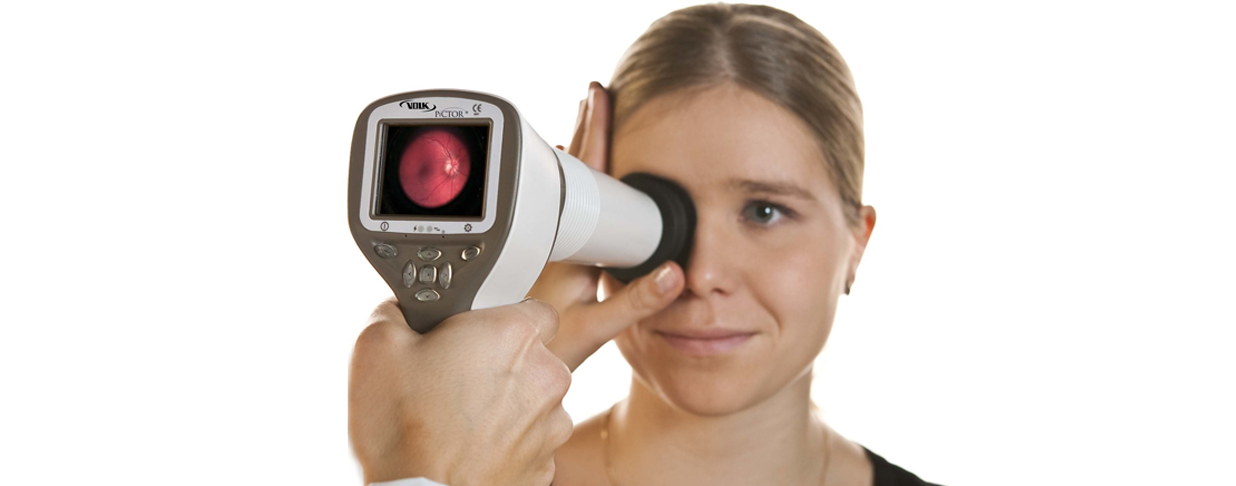An annual eye exam isn’t just a good idea for vision health. Since the eye is the only place a doctor can get a clear look at the blood vessels without surgery, eye doctors can detect underlying issues of potentially serious cardiovascular health issues like heart attack, stroke or hypertension.1
Artery blockage2
Blood vessels in the eye are affected by the same things as blood vessels in the rest of the body. When high cholesterol, calcium and blood clots affect blood vessels elsewhere, evidence appears in the eyes, usually in the form of plaque buildup (called atherosclerosis, when it affects the arteries). Plaque can become dangerous when it either completely blocks the blood vessel, or parts of it break off and get caught elsewhere. When those blockages happen, it can impact the heart, brain, blood vessels and the optic nerve resulting in heart attack or stroke, angina or even aneurysm.
Those with high blood pressure and high cholesterol are at greater risk for plaque build-up and atherosclerosis. Fortunately, eye doctors can detect plaque deposits via pupil dilation during an eye exam,3 and early detection can lower the risk of stroke and heart attack.3
Eye conditions caused by artery blockage
Eye Stroke3
“Eye stroke” is another name for retinal artery occlusions and retinal vein occlusions, or embolisms, where the artery or vein is blocked by a circulating blood clot, or the blood vessels are narrowed or stiffened. Symptoms include:
- Blurry vision
- Sudden or gradual change in vision in one eye
Patients with retinal vein occlusion have a higher risk of cardiovascular events like stroke, myocardial infarction and cardiovascular death.4
Xanthelasma5
A symptom linked to high cholesterol, xanthelasma is a flat or raised yellow deposit of cholesterol under the skin around the eye. While these deposits don’t affect vision, they’re more common in people who smoke, have diabetes or have high blood pressure.
Hollenhorst plaque5
This is a rare condition that occurs when a piece of cholesterol is found in the artery in the retina. It often comes from a larger artery, and can indicate a larger clot or blockage elsewhere in the arteries. It can lead to a stroke if it dislodges and moves to the brain. Hollenhorst plaque is more common in older adults, but causes no symptoms, so an annual eye doctor visit is critical.
Hypertension
Like artery blockages, eye doctors can detect the presence of hypertension, or high blood pressure, during an eye exam. Pupil dilation can reveal damaged arteries, abnormally sized veins (either too large or too small), or other eye conditions:
- Hypertensive retinopathy: when high blood pressure damages the blood vessels on the inside of the eye6
- Hypertensive optic neuropathy: swelling of the optic disk, with signs including flame-shaped hemorrhages and congested retinal veins7
- Hypertensive choroidopathy: when blood clotting protein creates a necrosis of arteries between the retina and sclera that leads to blockages7
Other conditions eye exams can help detect
With such a clear view of the blood vessels, eye exams can identify important markers that give eye doctors insight into a patient’s heart health. And since heart disease is the leading cause of death worldwide,8 scheduling an eye exam is an easy and critical way to help prevent and manage heart disease.
Besides the conditions listed above, eye exams can be instrumental in detecting heart disease in general, since decreased blood flow can contribute to retinal cell death—which an Optical Coherence Tomography (OCT) scan can help eye doctors see. Leaky aortic valve, also known as aortic regurgitation, is another condition eye doctors can detect with an exam.3
In conclusion
Annual eye exams are vital to member health beyond just taking care of their vision. With so many potential warning signs visible in the veins and arteries of the eye, annual eye exams can help diagnose heart disease early, potentially preventing a heart attack or stroke and providing an alternative to bloodwork and lab testing.
To learn more about the ways your members can protect their heart health with an annual eye exam, reach out to your EyeMed representative or visit eyemed.com.
•••
1 Mukamal, R.; “Early Signs of Heart Disease Appear in the Eyes”; American Academy of Ophthalmologists; aao.org; Reviewed April 27, 2022.
2 “Arteriosclerosis/atherosclerosis”; Mayo Clinic; mayoclinic.org; July 01, 2022.
3 Kelley, S., OD, MS; “What your eye doctor can tell about your heart health”; All About Vision; allaboutvision.com; February 02, 2022.
4 Paciullo, F.; et al; “Antithrombotic treatment of retinal vein occlusion: a position statement from the Italian Society on Thrombosis and Haemostasis (SISET)”; National Library of Medicine; ncbi.nlm.nih.gov; July 01, 2022.
5 Caceres, V.; “High Cholesterol and the Eyes: Signs and Symptoms”; Verywell Health; verywellhealth.com; Updated October 13, 2022.
6 Stokkermans, T., OD, PhD; “Hypertensive retinopathy: Retinal vascular damage caused by hypertension”; All About Vision; allaboutvision.com; Updated Monday, October 31, 2022.
7 Kim, J., MD; et al; “Hypertensive Retinopathy”; American Academy of Ophthalmology EyeWiki; eyewiki.aao.org; January 05, 2023.
8 Vaduganathan, M.; et al; “The Global Burden of Cardiovascular Diseases and Risk: A Compass for Future Health”; Journal of the American College of Cardiology; jacc.org; December 01, 2022.




